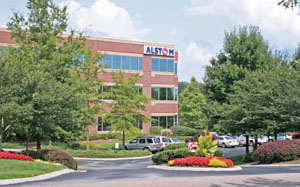TTCDA Design Guidelines Adopted

The Tennessee Technology Corridor concept is based upon the ability to achieve aesthetic quality and environmental conservation for developments within the Technology Overlay zones of the city and the county. The TTCDA Design Guidelines have been established to recognize the key policies that are intended to serve as the general design criteria during the site planning review process.
The purpose of these design guidelines is to shape future development and ensure quality design in the development process. By building on the area's existing assets, the guidelines attempt to achieve functional, aesthetic and visual unity while maintaining individual user expression. They take a balanced approach to achieve both unity and flexibility in the design and development process.
The first aspect of the TTCDA Design Guidelines is site design. Sites should be developed within the context of surrounding develop or subdivision. They also should respect the natural systems of the site during construction and as open space to capitalize on their aesthetic and functional value. The site design guidelines also refer to development intensity, setbacks, traffic flow, parking, lighting and utilities.
Building design should be planned along with site design to work together as a cohesive whole. The guidelines recommend high-quality building materials to improve the value of the buildings and promote visual continuity throughout the Technology Corridor. Developers also are encouraged to submit proposals that comply with LEED Certification requirements, as established by the U.S. Green Building Council.
The landscaping guidelines are intended to reflect the traditional character of the corridor while providing an atmosphere that is supportive of the needs of high technology industries. Landscaping is emphasized at the access points, parking areas and buildings.
A unified system of signage creates a cohesive image for visitors travelling in the corridor and to satisfy the functional needs of buildings and entry points. Simple yet sophisticated signs used consistently decrease the amount of clutter and visual disturbance along the roadway while presenting an image of quality. This includes all subdivision and planned development signs, yard signs, building signs and interim signs.
After recent changes to the TTCDA enabling legislation, the authority will now be able to review medium to high density residential uses in the Technology Overlay. The TTCDA and MPC staff will create design standards for such development that is consistent with the guiding principles of the TTCDA Comprehensive Development Plan and is compatible with the standards for non residential development in these guidelines.
The TTCDA Design Guidelines were adopted by TTCDA and MPC in March and Knox County Commission in April 2010.
Posted 07-21-2011

